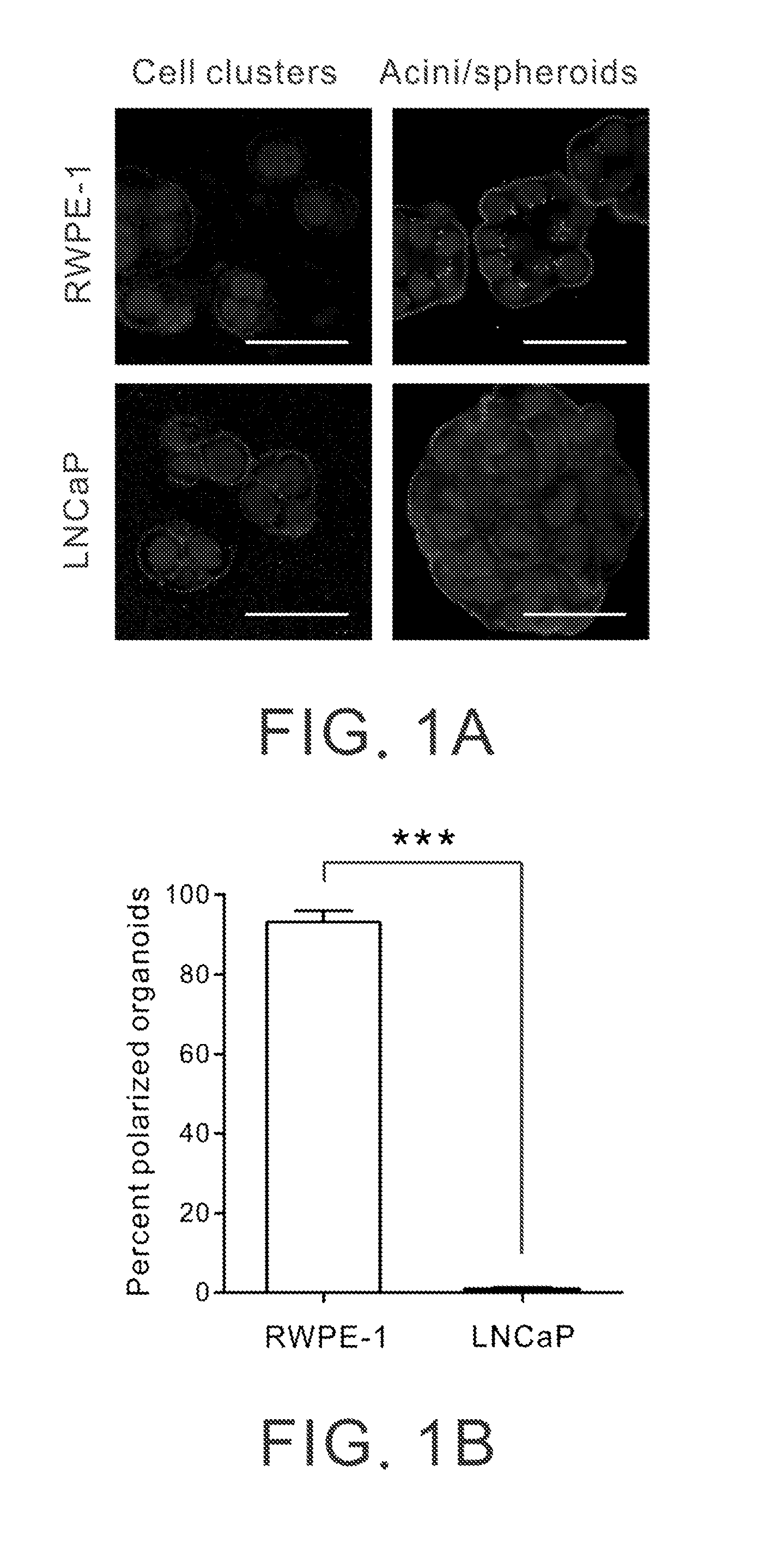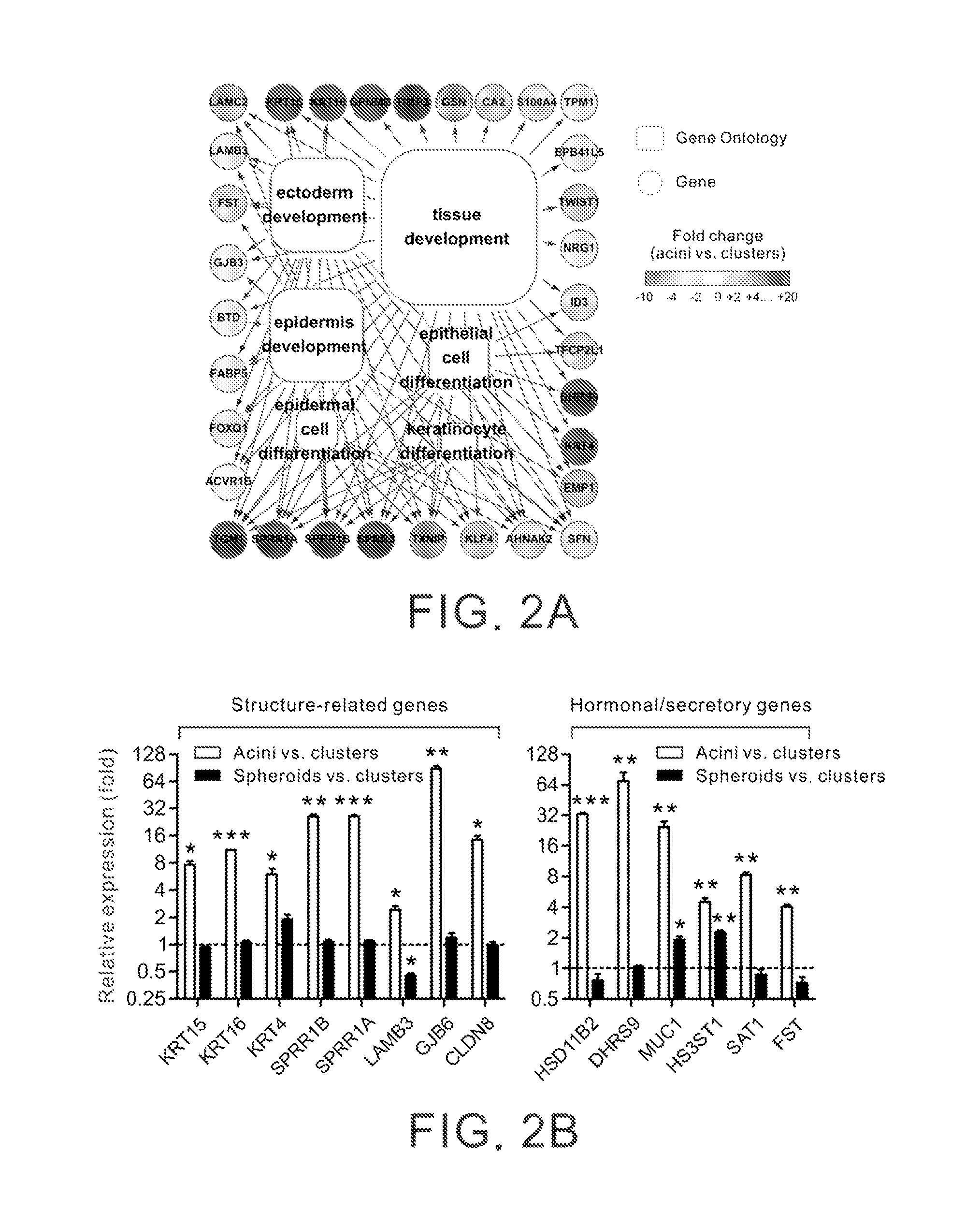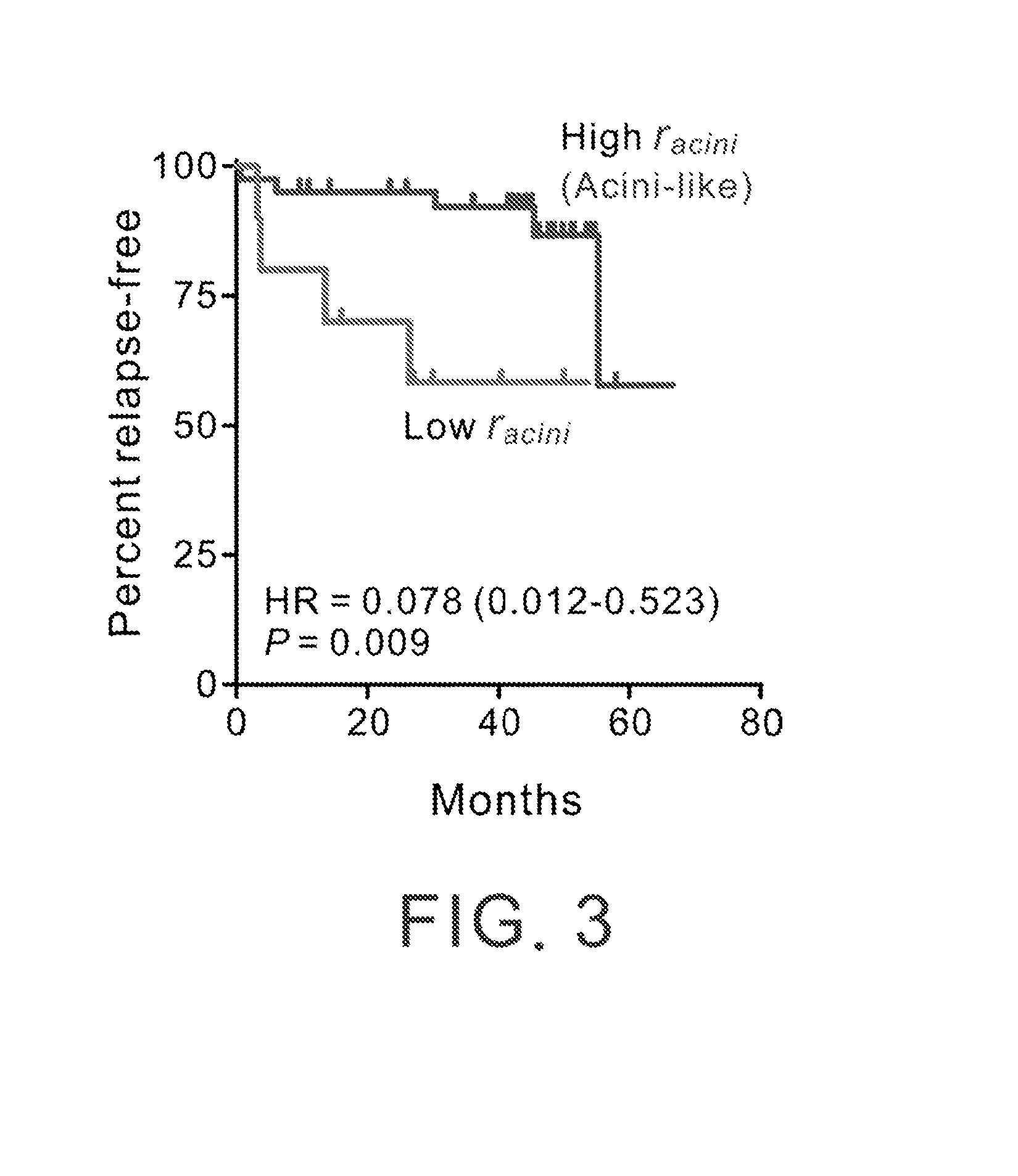Molecular markers for prognostically predicting prostate cancer, method and kit thereof
a prostate cancer and molecular marker technology, applied in the field of new molecular markers of prostate cancer, can solve the problems of poor therapeutic outcomes, modest prognosis of morphology-based classification system, and inability to allow risk stratification of prostate cancer
- Summary
- Abstract
- Description
- Claims
- Application Information
AI Technical Summary
Benefits of technology
Problems solved by technology
Method used
Image
Examples
example 1
Identification of the Gene Expression Profile Associated with Differentiation of Prostatic Acini
[0077]The acinar differentiation process of prostatic glands was recapitulated by culturing prostatic epithelial RWPE-1 cells (Bello et al., 1997) within a physiological relevant three-dimensional (3D) culture model, as described before (Weaver et al., 1997). RWPE-1 cells were immortalized prostate epithelial cells derived from human prostate acini and were known to retain normal cytogenetic and functional characteristics (Bello et al., 1997). RWPE-1 cells were embedded and grown within a thick layer of 3D reconstituted basement membrane gel (Matrigel, BD Biosciences). The culture was maintained in Keratinocyte-SFM (Sigma-Aldrich) supplemented with bovine pituitary extract, 10 ng / ml epidermal growth factor and antibiotics (all from Invitrogen) (Bello et al., 1997; Liu et al., 1998).
[0078]As shown in FIGS. 1A and 1B, when cultured within such a context for a short duration (48 hours), RWPE...
example 2
[0082]This example demonstrates that prostate cancers carrying the expression profile of the 411-gene in differentiated prostatic acini link to favorable clinical prognosis.
[0083]To demonstrate if the molecular profile associated with prostatic acinar differentiation carries important prognostic information in human prostate cancer, we interrogated a published gene expression microarray data set consisting of 21 patients with localized prostate cancer who underwent radical prostatectomy at the Brigham and Woman's Hospital (Boston, Mass.; the BWH cohort) (Singh et al., 2002). We determined the degree of resemblance between the patient tumors and prostatic acini by calculating the Pearson's correlation coefficients (racini) based on the expression of the 411 acinar differentiation-related genes.
[0084]In FIG. 3, the patients were divided into two subgroups according to racini, with the threshold determined by the maximal Youden's index (Pepe, 2003). We designated the tumors with higher...
example 3
[0089]This example describes the identification of a 12-gene prognostic model of prostate cancer based on the molecular profile related to prostatic acinar differentiation.
[0090]Having demonstrated the prognostic value of the prostatic acini-related expression profile in prostate cancer, we sought to refine this profile and identify a smaller set of genes with higher clinical utility. To this end, we mapped the 411 acini-related genes to the BWH data set (Singh et al., 2002) and constructed a “recurrence score” based on a Cox's model to predict the occurrence of tumor relapse following radical prostatectomy. We used a previously described supervised approach with modifications (Wang et al., 2005). Briefly, for each gene, univariate Cox's regression analysis was used to measure the correlation between the expression level of the gene (on a log2 scale) and the length of relapse-free survival of the PCA patients in the BWH cohort. We constructed 1000 bootstrap samples of the patients i...
PUM
| Property | Measurement | Unit |
|---|---|---|
| Size | aaaaa | aaaaa |
| Volume | aaaaa | aaaaa |
| Level | aaaaa | aaaaa |
Abstract
Description
Claims
Application Information
 Login to View More
Login to View More - R&D
- Intellectual Property
- Life Sciences
- Materials
- Tech Scout
- Unparalleled Data Quality
- Higher Quality Content
- 60% Fewer Hallucinations
Browse by: Latest US Patents, China's latest patents, Technical Efficacy Thesaurus, Application Domain, Technology Topic, Popular Technical Reports.
© 2025 PatSnap. All rights reserved.Legal|Privacy policy|Modern Slavery Act Transparency Statement|Sitemap|About US| Contact US: help@patsnap.com



